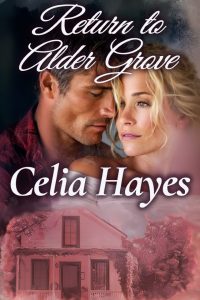Time to look back, at what I decided to do during 2025 – those things accomplished according to the program set for myself during that year, and what I want to get done in the coming year of 2026.
I did manage to finish Luna City #12, get it out there, as well as The Hills of Gold, the second of the YA series set in the pre-Civil War wild west, such as it was in California, Nevada and Utah. This offers a lot of scope for writing about all kinds of far-west shenanigans in the various precious mental rushes in California and Nevada, as well as scope for touching on all kinds of things – like vigilante organizations, and transcontinental communications and transport, in the heyday of the Pony Express and getting the telegraph and stage lines operational … and to write about them with the aim of getting tween and teen readers interested. I’ve said it before and will say it again – that history is a great deal more interesting, complicated and nuanced than school history textbooks present it. It’s almost as if the producers of such textbooks really want to turn off any interest on the part of pupils anyway. So – for next year, I’m aiming to do at least one and possibly two of the sequels to Hills of Gold, each focusing on younger children in the Kettering family. I also managed to dash off a Hallmark-style romance novel, for the Christmas trade, in three months of frantic scribbling, for an output of three finished books in 2025.
As for household matters – the 30-year mortgage on my little cottage was finally paid off, in March of 2025, which was a huge thing for me. I still am paying on the new windows, siding and HVAC work done several years ago, but one of those accounts is close to being paid off.
In the new year – I’d like to finally get a luxury vinyl plank floor installed in the kitchen/living room area, and the master bedroom, to match what is in the den and the front bedroom. This I likely will have to pay to have installed – I did the den floor myself, and that was a small room and doing it myself about wiped me out for a week. That job might have to wait for a year… Now, repainting the kitchen/living room and master bedroom myself, as well as repairing or replacing some of the installed bookshelves is well within the realm of possibility – that being a job I can do myself.
The other big expense project is getting the Accura Legend running again. I was so freaked about driving after getting T-boned when driving Thing the Versa that the Accura sat in the driveway until it couldn’t even be started by an electric charger. So – get that running again … or see about a new car. My daughter, of course, favors me in a new car. It all depends on what needs to be done to get the Accura running again, and how much it costs.
Keeping chickens is put off for another year, I’m afraid. A family of semi-tame ferals have taken to hanging out in the garden again, and they will not get along with cats. I was told by a guy who raises chickens and game fowl up in the Hill Country that it was likely a cat who killed two of our last flock and mauled a third hen so badly that she died later. Unless I keep them 24-7 in a secure, covered run …
So that’s the wrap of 2025 and expectations for 2026! And now, back to writing…

 Love in all the wrong places – Caro Robertson was a professional researcher, employee and occasional on-air reporter for a national public radio outlet; the perfect job, the perfect condo, the perfect fiancée. She had the college education, the job, the social position, the perfect life … and then in one fell swoop, everything went sour. Wrong. Disastrously wrong. In the space of a single week, she lost her beloved pet, the perfect fiancée and then her job. What was left for her, but to return to Alder Grove, the little town in Texas where she lived as a child and try to rebuild that life and a new career?
Love in all the wrong places – Caro Robertson was a professional researcher, employee and occasional on-air reporter for a national public radio outlet; the perfect job, the perfect condo, the perfect fiancée. She had the college education, the job, the social position, the perfect life … and then in one fell swoop, everything went sour. Wrong. Disastrously wrong. In the space of a single week, she lost her beloved pet, the perfect fiancée and then her job. What was left for her, but to return to Alder Grove, the little town in Texas where she lived as a child and try to rebuild that life and a new career?
Recent Comments